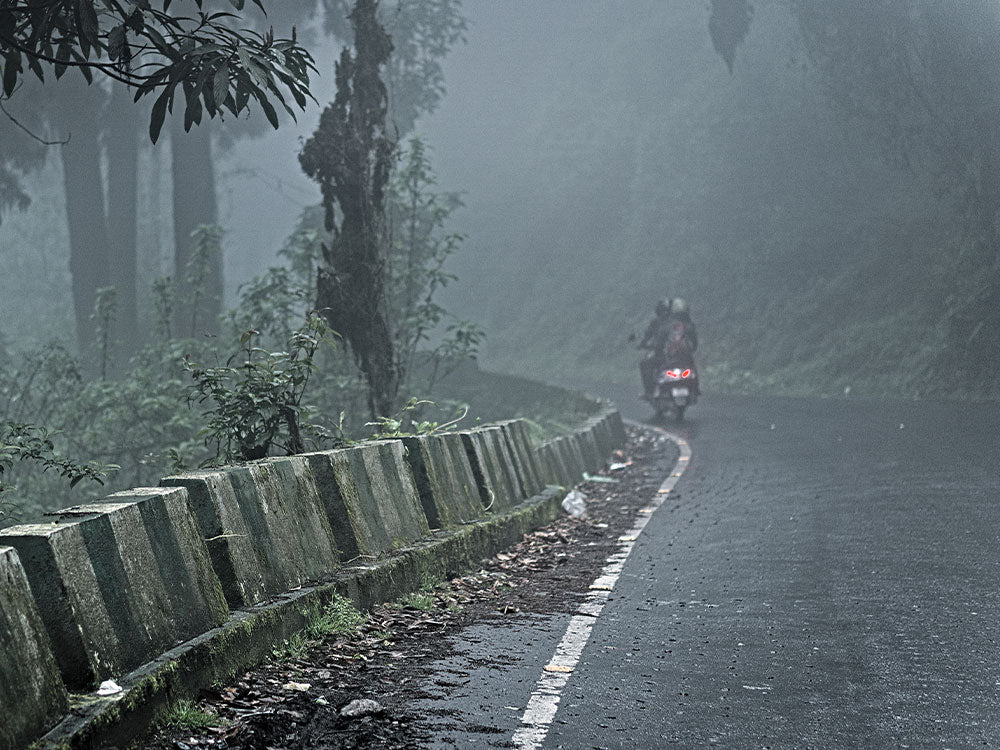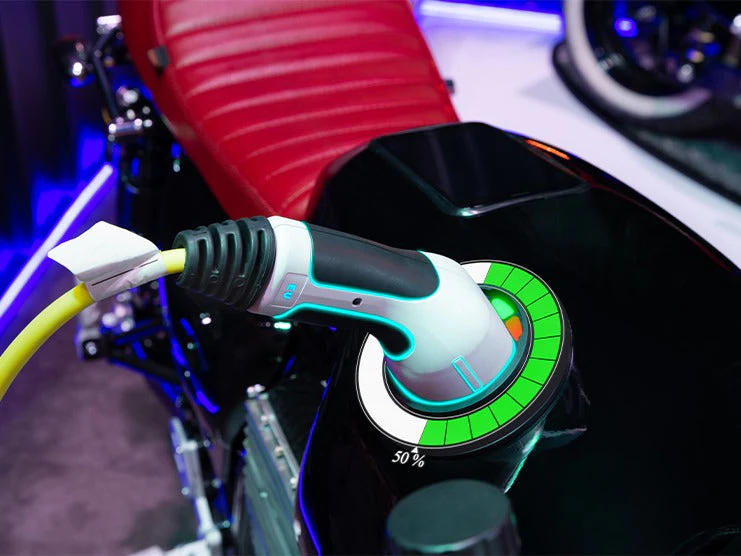Table of Content
Riding a motorcycle in bad weather should be avoided as it can be risky. Several reasons why riding in bad weather conditions can increase the risk of an accident include poor visibility and slippery roads. Motorcycle riders are more likely to suffer severe injuries in an accident due to being exposed. Even with a windshield, they have less protection from heavy wind. Therefore, bad weather conditions have a huge impact on motorcycle rider safety. Read this article to learn how bad weather conditions cause motorcycle accidents.
1. How Dangerous is Riding a Motorcycle in the Rain?

Riding a motorcycle in the rain can be dangerous due to poor visibility. You may not be able to see other vehicles on the road as the inside of the helmet may start to fog up. If you choose not to wear a helmet, the rider will be buffeted by wind or rain, causing you to constantly blink and lose focus. If water enters the helmet and you adjust the visor down, the trapped moisture will fog up the interior until the helmet is completely dry again. Also, the roads will become slippery due to the rain and require you to ride carefully. Due to issues like slippery roads and poor visibility, the number of motorcycle accidents can increase in the rain.
1.1 How to Ride Safely in the Rain?
Avoid riding fast, braking suddenly, and leaning with your motorcycle when turning a corner. Keep your motorcycle straight as much as possible to avoid slipping. Also, avoid hitting potholes and small puddles on the road. Wear bright-colored waterproof riding gear, motorcycle boots, and a raincoat to make it easier for others to spot you. Ride on the clearest and driest lane on the road as possible to ensure better safety. It is better to not go for a ride if it is raining heavily.
Also Read: 10 TIPS FOR RIDING A MOTORCYCLE IN THE RAIN
| Safety Tips for Motorcycle Riding in the Rain | |
|---|---|
| Do’s ✔ | Don’ts ✖ |
| Ride Slowly ✔ | Avoid riding fast and accelerating quickly ✖ |
| Gradually apply the front and rear brakes to stop the motorcycle ✔ | Avoid sudden braking, especially the front brake ✖ |
| Keep your motorcycle straight even while turning corners ✔ | Avoid leaning your motorcycle to turn a corner ✖ |
| Ride in the driest lane on the road ✔ | Avoid riding on wet patches and hitting small puddles and potholes ✖ |
| Wear a bright-colored reflective vest to be more visible ✔ | Avoid wearing dark and dull colors while riding ✖ |
2. Dangers of Riding a Motorcycle in Windy Conditions
Windy weather conditions can be more dangerous for motorcyclists than rain since it can cause loss of vision and reduce handling. A rider can lose his/her balance due to heavy winds causing the motorcycle to shake. The lack of wind protection can also make it difficult to see without constantly blinking. Dust and debris can enter your eyes and temporarily blind you during a ride. In windy weather conditions, the wind can enter your helmet and deafen you. Distractions like these can cause you to lose control of your motorcycle, resulting in a motorcycle accident.
2.1 How to Safely Ride a Motorcycle in Windy Conditions
- Install a large windscreen to ensure better wind protection
- Wear a helmet that fits you
- Ride slowly
- Take a rest break during the ride
- Do not go for a ride if the weather is too windy
Also Read: HOW TO RIDE A MOTORCYCLE IN HIGH WIND
3. The Impact of Snowy and Cold Weather Conditions on Motorcycling

Snowy weather conditions are common in certain U.S. states, including New York, Massachusetts, Vermont, Alaska, Michigan, New Hampshire, and Colorado. Therefore, riders must know how to prepare their motorcycle and riding gear to better deal with snow. Snowy weather conditions can make motorcycle riding difficult and cause several mechanical issues. Motorcycles are difficult to start in the cold due to the change in the viscosities of various fluids, including engine oil, brake oil, fork oil, and gear oil. Most riders keep their motorcycles stored away for the winter, which can result in other issues, including rust buildup, battery drainage, and fluids being contaminated.
4. How Snowy Weather Conditions Cause Motorcycle Accidents
Riding a motorcycle during or after a snowfall can be dangerous. You may not be able to find a clear road where you can ride your motorcycle. Snow makes the road extremely slippery and makes it difficult for riders to maintain balance even when riding at slow speeds. The glare of the sun reflecting off the snow can cause you to lose focus while riding.
It becomes difficult for the motorcycle engine to maintain a nominal operating temperature and engine oil can become thicker in cold weather, resulting in poor acceleration and other engine issues.
4.1 How to Ride Safely in Snowy Weather Conditions?
- Ride slowly
- Wear appropriate winter riding gear
- Keep yourself warm
- Do not store your motorcycle for long
- Warm up the engine while idling before going on a ride
- Use specialized antifreeze engine oil
- Check your motorcycle’s fluids levels regularly
- Avoid leaning on your motorcycle
- Avoid tailgating
- Avoid going for a ride in snowy weather
5. Riding a Motorcycle in Fog
Some motorcycle riders enjoy riding during the winter as long as there is no fog. Riding through fog can be extremely dangerous if visibility is low. There are certain days and nights during winter when visibility becomes zero and you cannot see anything on the road, increasing the risk of getting into life-threatening motorcycle accidents.
Most accidents occur due to poor visibility while riding through fog because riders cannot accurately judge the exact distance from the vehicle in front of them. They also may not be able to identify safety hazards before it's too late. Riders often misjudge their current speed and unknowingly accelerate faster. It also becomes difficult for them to determine how fast other vehicles are going.
5.1 How to Ride Safely Through Fog?
- Installing motorcycle fog lights can help you see through the fog more effectively than with normal headlights
- Ride slowly and maintain a safe distance from other vehicles
- Clean the visor before going for a ride
- Use anti-fog solutions to your visor from fogging up
- Make sure your motorcycle’s lights are working, including the headlamp, fog light, tail light, brake light, and turn signals
- Avoid stopping or slowing down suddenly on traffic lanes
- Follow a vehicle with a bright tail light going in the same direction
- Avoid riding in dense fog is dense. Wait for a few hours until the fog clears up
6. Common Riding Tips to Avoid Motorcycle Accidents in Bad Weather Conditions
- Maintain a safe distance from other vehicles
- Avoid overtaking and passing if there is no clearance
- Focus on the road and traffic conditions
- Avoid distractions
- Avoid lane changing if unsafe
- Ride slowly
- Avoid rapid acceleration
- Avoid applying the brakes suddenly
7. Statistics
Statistics show that the weather is only a minor contributor to motorcycle accidents. According to official statistics, most motorcycle accidents occur on clear sunny days. Only 0.36% of motorcycle accidents occurred due to fog and 3% occurred due to rain.
8. Final Words
Riding a motorcycle in bad weather conditions is not safe if you do not have appropriate riding gear and lack the proper training. If you are a regular motorcycle rider, you can prepare for bad weather conditions by carrying useful gear to help you stay safe. It is best to carry a raincoat in your motorcycle’s saddlebags during cloudy days. Installing motorcycle snow tires for snowy weather conditions ensures better traction and prevents slipping. You should also install a windshield to protect your eyes from dust and ensure better wind protection. To improve visibility on the road in foggy weather, you should install motorcycle fog lights and bright tail and brake lights. There are several other useful motorcycle parts to improve your motorcycle’s comfort and storage capacity, including sissy bars, backrests, crash bars, fairings, sissy bar bags, and motorcycle trunk bags.













Leave a comment
All comments are moderated before being published.
This site is protected by hCaptcha and the hCaptcha Privacy Policy and Terms of Service apply.